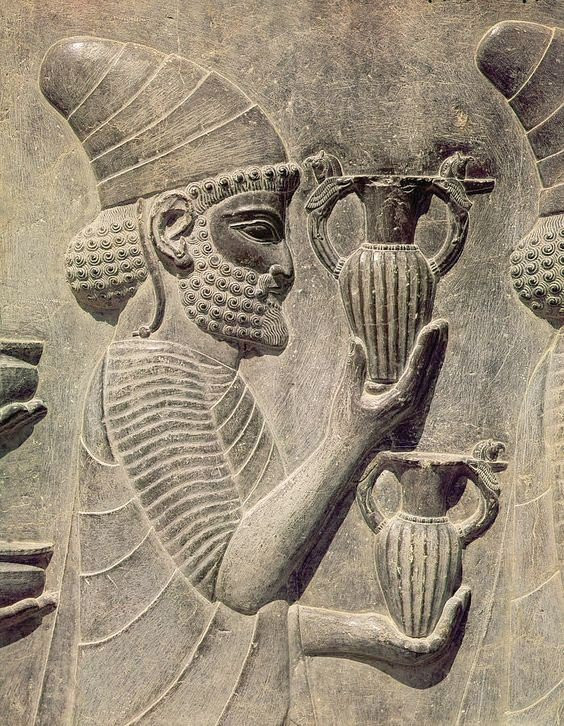In the heart of present-day Iran, nestled among the arid landscapes, stands the enduring legacy of one of the most powerful empires in history—the ruins of Persepolis. Once the grand ceremonial capital of the mighty Achaemenid Empire, this ancient city continues to fascinate historians, archaeologists, and travelers alike. Its towering columns, intricate reliefs, and sprawling layout offer a glimpse into the grandeur of an empire that once spanned vast territories, stretching from the Indus Valley to the Mediterranean Sea. Though centuries have passed since its destruction, Persepolis remains a testament to human ingenuity, ambition, and the rise and fall of civilizations.

As you approach the site, you can almost hear the echoes of its glorious past. Imagine being a foreign dignitary or a visiting noble, arriving at the city’s entrance for the first time. The sheer scale of Persepolis would have been breathtaking—colossal stone staircases leading to massive gates, adorned with mythological creatures that symbolized divine protection. The complex itself stretched across a vast plateau, with buildings constructed from finely cut limestone, their walls adorned with elaborate carvings that spoke of the empire’s unity and diversity. It was not merely a city; it was an architectural declaration of power, a stage upon which the Achaemenid kings showcased their dominion over lands far and wide.
At the heart of Persepolis stood the Apadana, the grand audience hall where Persian kings received envoys from across their vast empire. This enormous structure, supported by towering columns, could accommodate thousands. Its walls were carved with remarkable detail, depicting processions of delegates from distant lands, each bringing gifts and tributes—gold, exotic animals, fine textiles—symbolizing the empire’s unparalleled reach. These intricate reliefs not only displayed the wealth of the Achaemenids but also conveyed an important message: despite their vast differences in language, culture, and geography, all subjects were bound together under the rule of a singular, powerful dynasty. Every detail in these carvings spoke of an empire that prided itself on governance through respect and cooperation rather than sheer force alone.
Yet, Persepolis was more than just a political center; it was also the spiritual and cultural heartbeat of the Achaemenid realm. The city came alive each year with the festival of Nowruz, the Persian New Year, celebrated on the spring equinox. This event was no ordinary gathering—it was a grand affair, bringing together people from across the empire, from the shores of the Aegean to the valleys of Central Asia. Colorful processions, music, feasts, and religious ceremonies filled the streets as subjects and rulers alike honored their gods and the celestial harmony that dictated life. The architecture of Persepolis reflected this deep spiritual connection—every sculpture, every motif bore significance tied to Zoroastrian beliefs, emphasizing the cosmic balance between good and evil, order and chaos. The great stone bulls and lions that flanked entrances symbolized strength and divine guardianship, while the floral designs carved into the staircases and walls reflected the paradise that the kings sought to create on Earth.
But even the mightiest of cities can fall. In 330 BCE, the forces of Alexander the Great descended upon Persepolis, bringing with them the end of an era. Whether out of strategic intent, personal vengeance, or the chaos of war, the city was set ablaze. The golden roofs melted under the inferno, priceless artworks were looted or destroyed, and the great capital, once the jewel of an empire, was reduced to smoldering ruins. What had taken generations to build was undone in a single night. The very heart of the Achaemenid dynasty, the symbol of Persian unity and strength, was left in ashes, marking not only the fall of a city but also the decline of an empire that had ruled with power and vision for centuries.
Yet, despite its destruction, Persepolis never truly disappeared. For over two millennia, its ruins lay beneath layers of sand and time, waiting to be rediscovered. Today, these remnants of the past stand as silent witnesses to history, telling stories of kings and conquerors, of celebrations and conquests. Archaeologists continue to uncover new details, piecing together the lives of those who walked these halls, while scholars analyze the inscriptions that still whisper the words of long-gone rulers. Each discovery brings new insights into a civilization that, despite its downfall, continues to shape our understanding of governance, culture, and art.
Recognized as a UNESCO World Heritage site, Persepolis is more than just an archaeological treasure—it is a symbol of resilience, a reminder of the heights human civilization can reach and the fragility of even the most powerful empires. For modern Iranians, it represents national pride, a connection to their rich cultural heritage, and an enduring legacy of the Persian identity. For visitors from around the world, it is an invitation to step back in time, to walk through the remnants of a once-great empire, and to reflect on the cycles of history.
Standing among the towering columns and weathered staircases of Persepolis today, you are not merely observing ruins—you are witnessing the echoes of an ancient world, one that still speaks to us through its artistry, its ambition, and its undying spirit. It is a place where past and present merge, where the legacy of the Achaemenid Empire endures, reminding us that while kingdoms rise and fall, the human desire to build, create, and leave a mark on history remains eternal.





